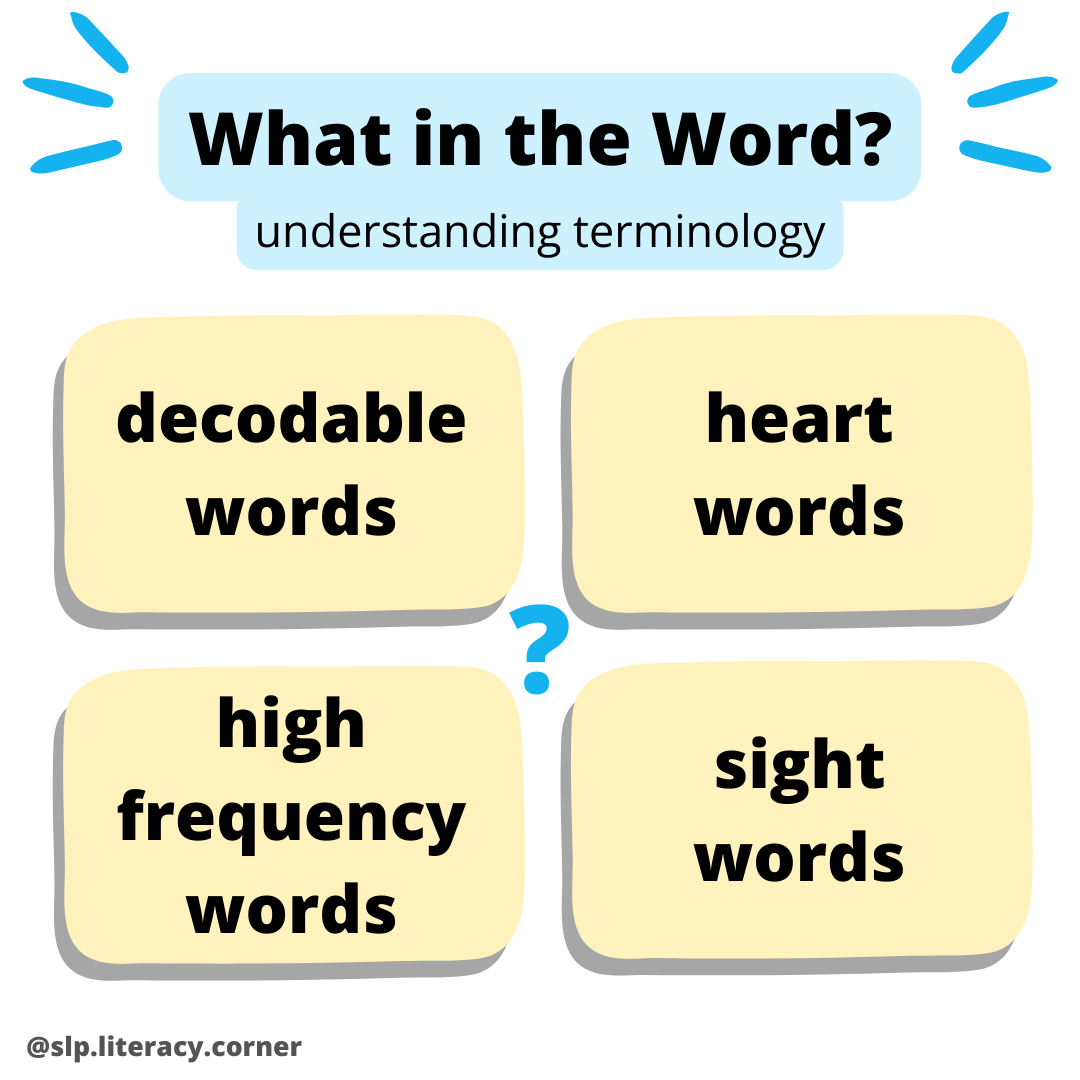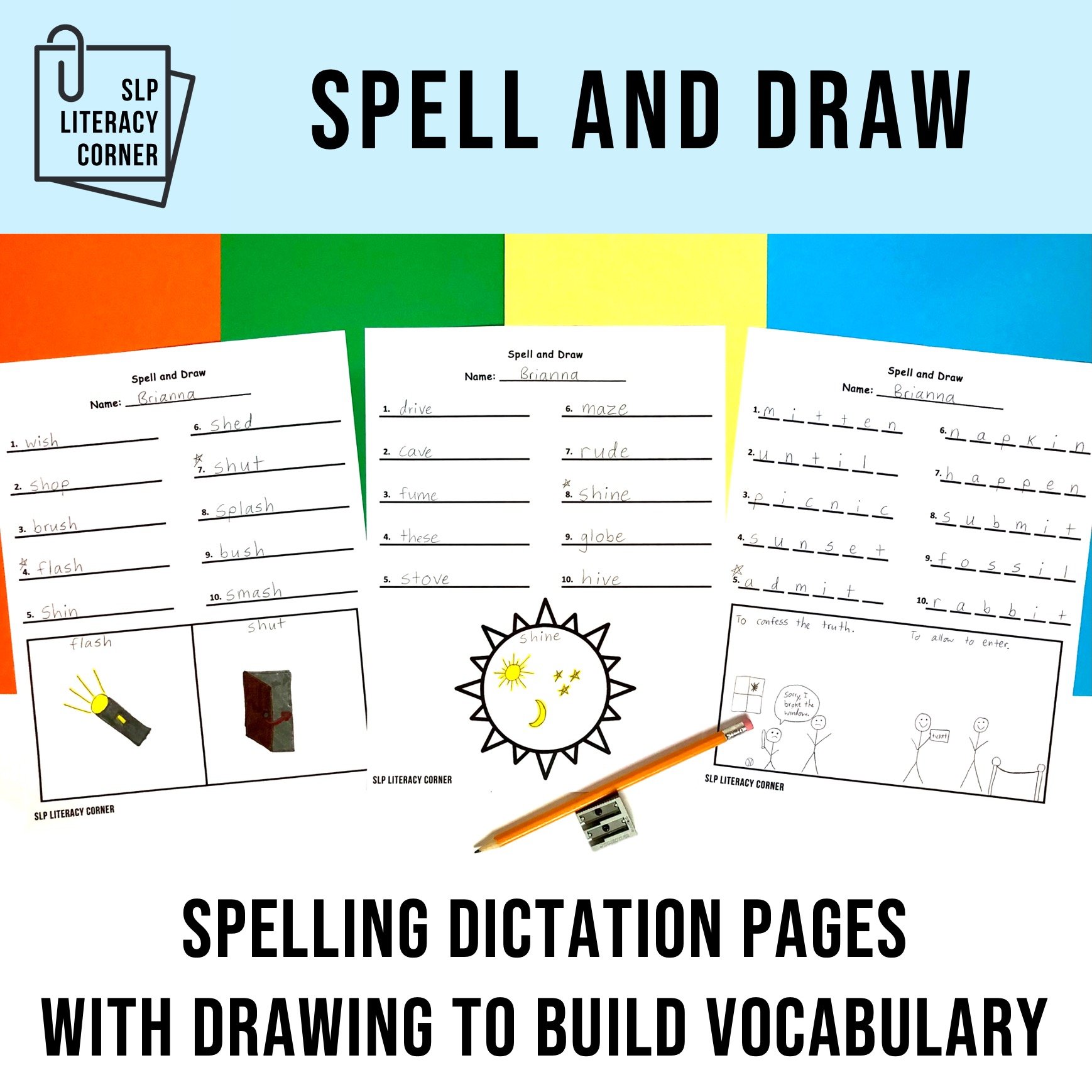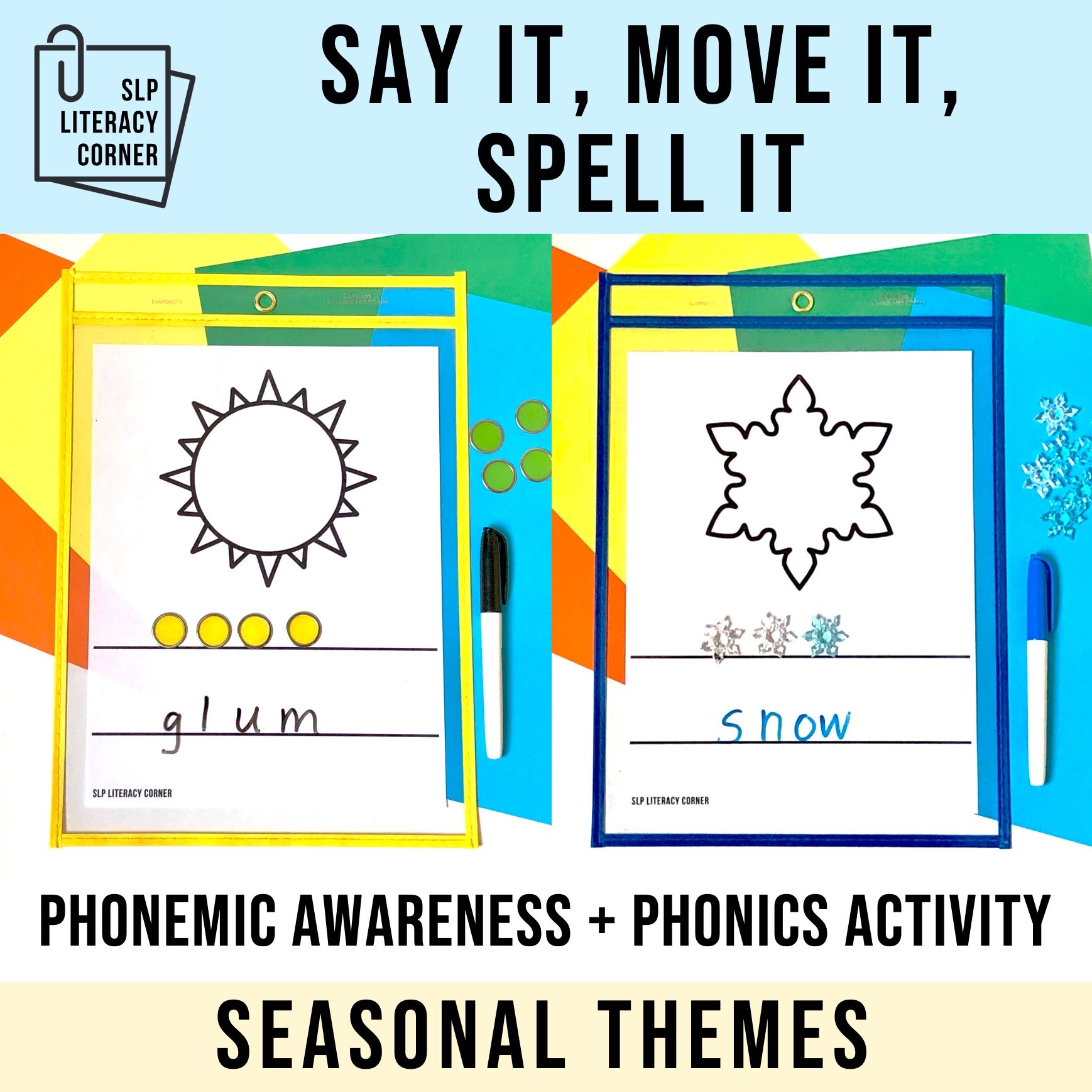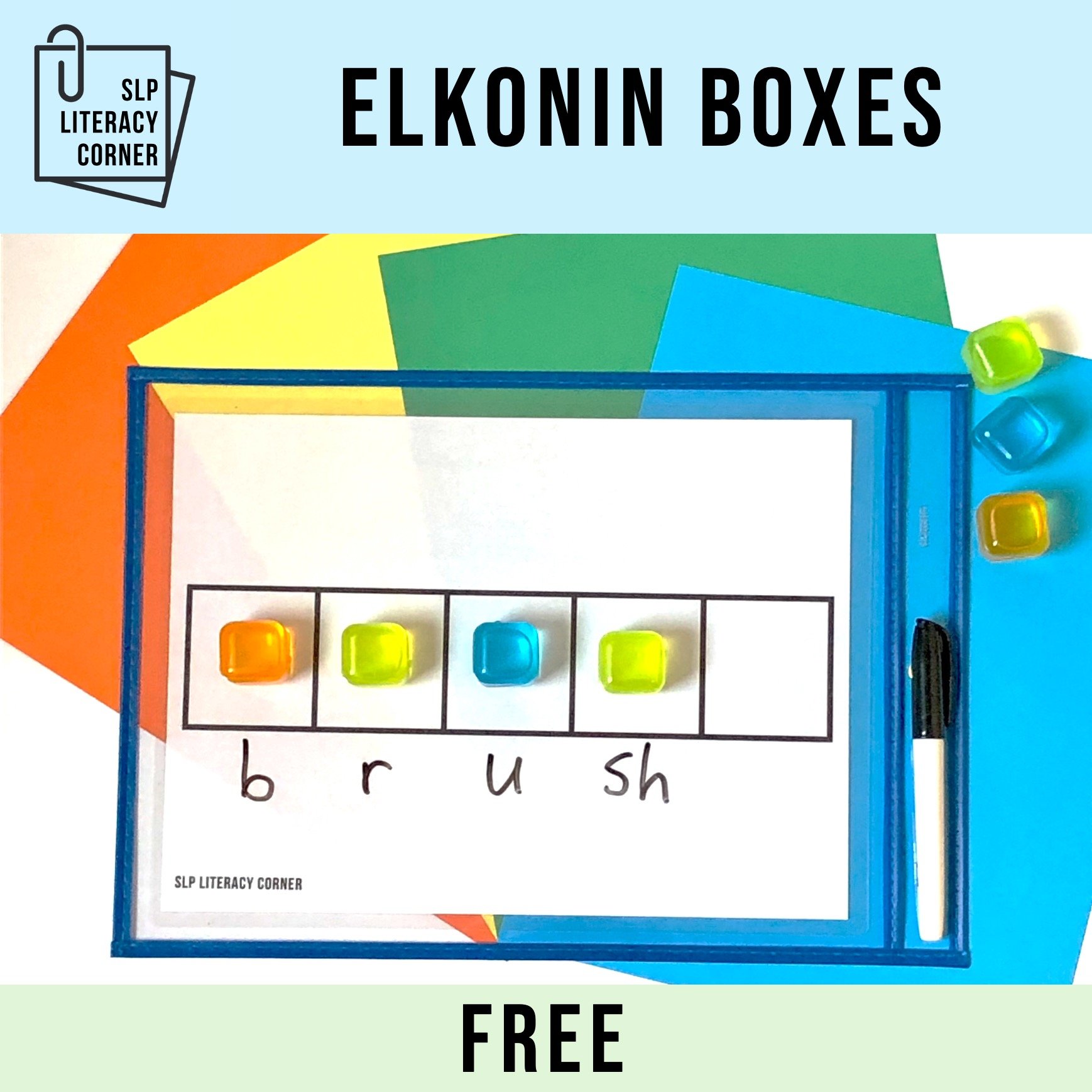What in the Word?!
Written by: Brianna Guild, MHSc SLP(C)
Date: January 26, 2024
Updated: November 13, 2024
Decodable words, heart words, high frequency words, sight words… What do all these terms mean and how should we teach these different words? If you’ve ever wanted clarification about this or needed a quick references to send others, keep reading!
✏️ Decodable Words (Regular Words)
- Decodable (or regular) words are words that can be sounded out using the phonics and spelling patterns a student has learned. These words are “spelled the way they sound”. Yes, there are many spelling patterns to learn in English, but contrary to popular belief, English is not crazy, it is complex.
- Examples:
1 sound can be represented by 1 letter, such as in cat, twig, frost, pumpkin.
1 sound can be represented using multiple letters, such as in ship, chat, then, snack, fridge, hatch.
The same sound can be spelled in more than one way, such as the “long a” sound in table, came, train, play, eight, they.
- Helpful resources for teaching decodable words:
✏️ Heart Words (Irregular Words)
- Heart (or irregular) words are words with some part(s) that cannot be sounded out using regular phonics and spelling patterns. Students must learn these spelling irregularities “by heart”. We can still teach students to sound out irregular/heart words if we explicitly teach them what sound each irregular spelling pattern represents.
- Example: in the word said, ai represents a “short e” sound.
- Helpful resources for teaching heart words:
✏️ High Frequency Words
- High frequency words are the words that occur most often in written language. High frequency words can be regular or irregular words. For example, the Dolch Word Lists are high frequency word lists because they are composed of the most frequently used words in the English language. The Dolch Word Lists, and other high frequency word lists, are not lists of “sight words” that should be memorized.
- Examples: a, and, for, he, is, in, it, of, that, the, to, was, you. These 13 words account for more than 25% of the words in print! (Blevins, 2016).
- Helpful resource for teaching high frequency words:
✏️ Sight Words
- Sight words are any words readers can instantly and automatically recognize. A beginning reader has 0 sight words, but through repeated exposure, practice and direct instruction, any word can become a sight word! Proficient, fluent readers have thousands of sight words! In fact, more than 95% of the words we encounter in text as adults have become sight words (Kilpatrick, 2016).
How do we teach all these words?
It is important to know that readers store "irregular" words in their memory in the same way they store "regular" words— by attending to letters and associating these with the sounds that they represent (Blevins, 2016).
This means that we can help all words (decodable words, heart words, high frequency words) become sight words by promoting orthographic mapping— the process whereby readers connect the sounds in a word (phonemes) to the letters (spelling). This is crucial for storing printed words in long-term memory, which makes for a fluent reader! We can promote this process by having students say the sound while they physically write the corresponding letter(s) during spelling tasks. It is also beneficial to use Elkonin boxes and other similar visuals and activities.
Join the SLP Literacy Corner email newsletter to get access to exclusive free resources, including understanding terminology handouts (a helpful handout version of this information) as well as spelling screeners (decodable and irregular words) to help you assess your students’ word level spelling skills. Sign up here!
If you're looking for spelling activities, check these out:
References:
Blevins, W. (2016). A Fresh Look at Phonics: Common Causes of Failure and 7 Ingredients for Success. Corwin Press Inc.
Kilpatrick, D. (2015). Essentials of Assessing, Preventing, and Overcoming Reading Difficulties. John Wiley & Sons, Inc.
Reading Rockets (n.d.). Basics: Sight Words and Orthographic Mapping. https://www.readingrockets.org/reading-101/reading-and-writing-basics/sight-words-and-orthographic-mapping






